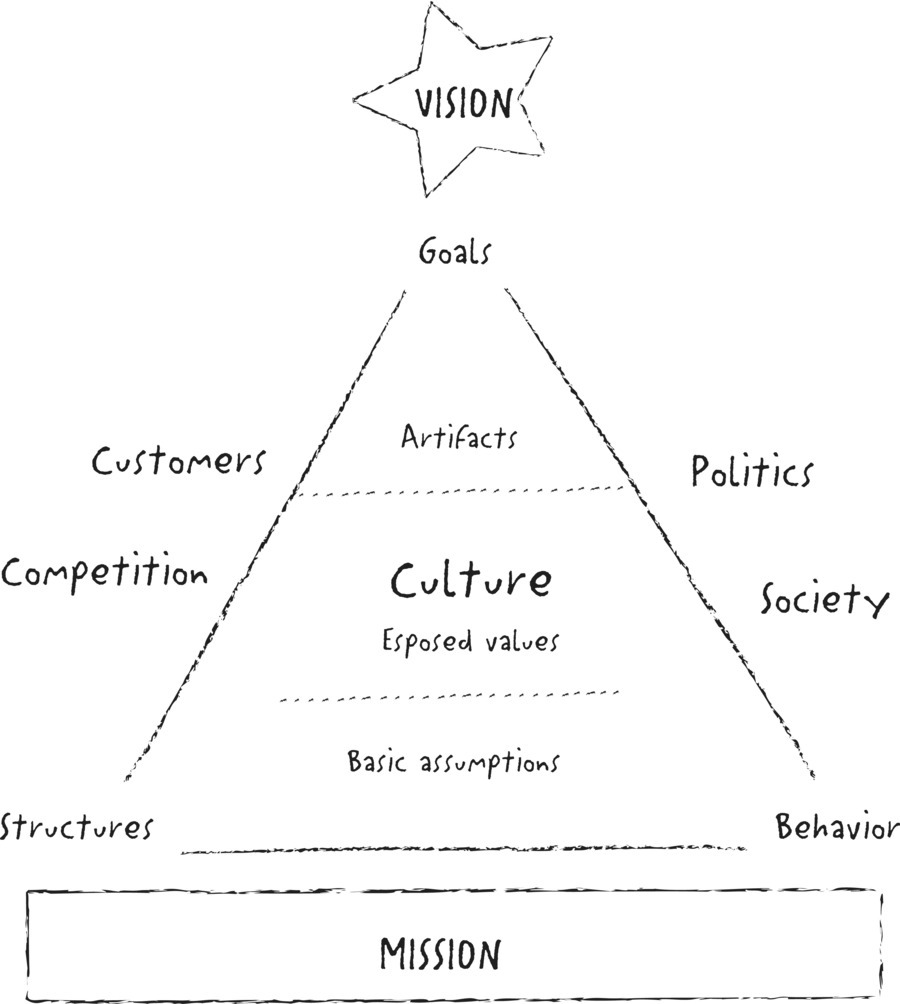12 CORPORATE CULTURE AND POLITICS
What does all we’ve been talking about have to do with culture, then? And what type of culture are we talking about when we discuss corporate culture? As is the case with the definition of the concept “organization,” we immediately seem to know precisely what we mean. Our everyday understanding presents us with all sorts of artifacts that generate the culture of an organization, for example, the brand name, the architecture of a company’s offices, the workspaces, the nature of the advertising, or the experience of a particular product. In fact, all these elements play a part in the definition of culture. The model inspired by leadership guru Edgar H. Schein [1] makes it clear that corporate culture is much more than a loose combination of individual elements.

Figure 12.1 Corporate culture.
Figure 12.1 demonstrates that culture:
- Is influenced by the context of an organizational system. Corporate culture isn’t a monument set in stone. It reacts much more selectively to each market situation, the political climate, the competition, or social change.
- Is driven by a particular mission, a specific organizational purpose, and is oriented toward a particular vision.
- Exists in the triangle formed by goals, structures, and behavior.
- Can be subdivided into three levels:
- Artifacts, that is, all phenomena that you can see, hear, or sense, such as ...
Get Kanban Change Leadership: Creating a Culture of Continuous Improvement now with the O’Reilly learning platform.
O’Reilly members experience books, live events, courses curated by job role, and more from O’Reilly and nearly 200 top publishers.

